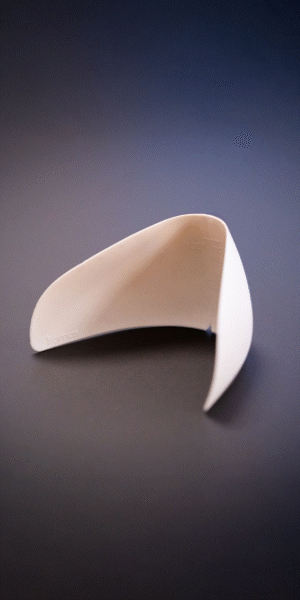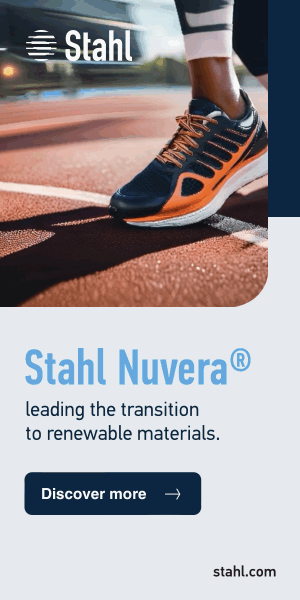Better safe than sorry

US-based company Honeywell is better known for its work in the aerospace and technology sectors, but for a number of years it has run a successful multi-brand safety shoe business. These operations are part of its Safety and Productivity Solutions (SPS) division, one of the four business units it operates. More specifically, it is the Industrial Safety segment that is responsible for its wide range of personal protective equipment, which as well as safety shoes also includes head, face and eye protection, protective clothing and other items of safety kit.
Ken Ueda, global director of footwear for Honeywell Industrial Safety, tells World Footwear that the company has been involved in the safety shoe sector for nearly a decade. “Honeywell’s background in safety shoes has come through acquisitions,” he explains. It acquired French personal protective equipment company Sperian in 2010, a transaction that included the Bacou safety shoe brand. The following year, it added Singapore-based steel toe-capped boot specialist King’s Safetywear to its growing portfolio.
The Bacou brand, along with Otter, a brand that was previously part of the King’s group, now form the basis of Honeywell’s own-brand safety shoe offering. Mr Ueda describes the products sold under this label as “rugged, durable safety boots that are made for extreme protection”. He adds, however, that they are stylish enough to also be worn outside of the working environment.
The King’s brand is Honeywell’s “basic” range, with products featuring simple, black leather uppers and having a design based around comfort and durability. They have steel toe protection and pierce resistant insoles, and are anti-static and slip resistant. This makes them suitable for use by workers in warehouses and other logistics operations.
The Oliver brand, which was also formerly part of King’s Safetywear, offers footwear primarily for the oil, mining, gas and heavy construction industries. To suit these applications, its products are made from chemical and liquid resistant leathers. They are mostly sold in Australia.
The most recognisable name in the portfolio is the Xtratuf neoprene boot brand. First made by the BF Goodrich company in the 1950s, these boots are colloquially referred to as the “Alaskan sneaker” due to their popularity with fisherman in that US state. Honeywell bought the brand in 2008.
“These products are designed to withstand the toughest conditions,” Mr Ueda says. They are favoured by those working in the commercial fishing industry due to the waterproof protection they offer and their highly slip-resistant outsole. The Xtratuf brand now also makes some lifestyle-inspired shoes, offering these same qualities to recreational fishing and water sports enthusiasts.
Tracking trends
Honeywell moved production of the Xtratuf boots to China in 2010. They had previously been made in Rock Island, Illinois. The company’s manufacturing footprint now spans Europe and Asia.
“The reason for having regional manufacturing sites is that it allows us to adapt to the needs of local markets,” Mr Ueda says, adding that it means shorter lead times and better support for customers in different locations. Having regional manufacturing hubs has allowed Honeywell Industrial Safety to react more speedily to emerging trends in the safety footwear sector. These trends sometimes take their cue from other segments, such as sport shoes.
“We are seeing a lot of inspiration from the athletic market,” Mr Ueda says, with end users asking for things like more stylish designs, lighter products and greater levels of cushioning. This latter quality is currently in high demand, especially as many of those working within the industries that require safety shoes spend a great deal of time on their feet. Lower weight is an important factor here, too. Transferring some of the characteristics of athletic footwear into safety shoes is “not too difficult”, because Honeywell’s sourcing partners are able to provide the materials needed to do so.
On the subject of materials, leather is still an important one for the safety sector. “When people think about leather they think about quality, they think about craftsmanship, they think about water and oil resistance,” Mr Ueda says, with its products having applications in several industries where resistance to different liquids is very important. There is a place for synthetic materials as well, such as in the lightweight models favoured by those working logistics.
With its in-house material development team, Honeywell is not restricted to the footwear materials that are already on the market. It is working on “new foams, gels and upper materials”, Mr Ueda says, and he predicts there will be “exciting developments” in the next 12 months as a result of this work.
Footwear for the future
Connectivity is another trend that the Industrial Safety division aims to capitalise on and it is developing connected footwear concepts that it believes will offer benefits to the person wearing the shoes and to their employer.
“It would allow safety managers to provide a safer environment for their employees by understanding the type of activities their workers are doing,” Mr Ueda explains. He offers the example of shoes that can detect if the wearer is lifting more weight than they should be. Other potential applications include tracking the movement of workers to increase efficiency or to flag up employee fatigue, something that could put people in danger given the nature of many safety-related occupations.
“We are thinking about how we can provide a better experience and a better working environment by understanding how workers use their safety footwear,” he continues. Connectivity would also be a tool to help employers ensure they are adhering to workplace compliance regulations.
The diverse business interests that the Honeywell group has, including aerospace technology solutions, have been beneficial to its work on connected footwear solutions. “We are primarily doing this in-house because we have great engineering and development teams,” he says; it already has the necessary software, but integrating it into physical products takes a little longer. It hopes to bring them to market in the next two years.
It may not be as financially lucrative as its work in the aerospace industry, but Honeywell clearly values its safety footwear business and the wider Industrial Safety division of which it is part. With a diverse product portfolio, global manufacturing capabilities and in-house material development and engineering expertise, the company appears well placed to continue to makes shoes that help provide a safer working environment for professionals in a range of industries.
Honeywell’s products serve a range of industries where safety shoes are required.
All Credits: Honeywell












